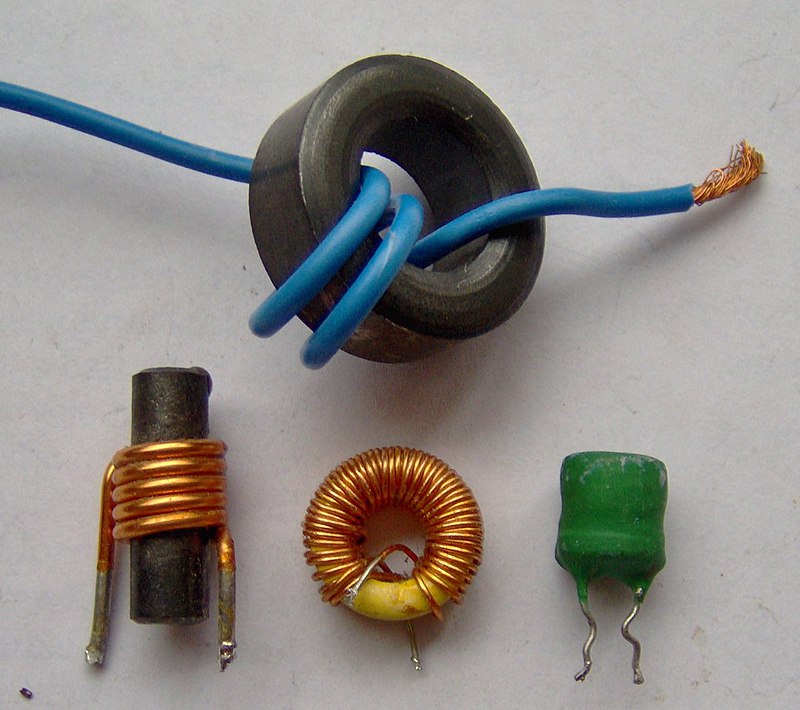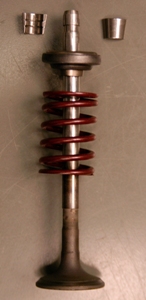

Use Ctrl + f on your keyboard to search!
A
AC Motor
Motor driven by AC power, that uses the function of alternating current for commutation.
Accelerometer
Device for measuring acceleration - usually based on piezoelectric materials.
Actuator
Mechanism for applying a force or displacement to a system, and typically used as a word when talking about computer control.
Analog
Continuous, having to do with the 'Real World'.
Asynchronous
Used to describe a computer connection that can 'stand and wait' or is interrupt-driven.
B
Band-Pass Filter
Electronic filter that only lets electrical signals of a given frequency 'passband' through.
Brushless Motor
A DC motor that performs commutation through electronic means, as opposed to traditional mechanical means.
C
Capacitor
Electrical charge storage device.
Charge Amplifier
Electrical device that converts an electric charge into a voltage.
Check Value
Fluid system equivalent of a diode.
Commutator
Device for reversing the direction of current.
Closed Loop Control
Control system that adjusts its control signal dependent on some aspect of the physical state of the system.
CMOS
Complementary Metal Oxide Semiconductor: a low-energy requirement technology for making transistors.
D
D/A Converter
Digital-Analog converter: takes a digital signal and converts it to a control-signal-level voltage or amperage.
DC Motor
Motor driven by DC power.
Digital Optical Encoder
An optical-based counter that delivers a digital signal as a control output.
Diode

An electrical device that will only allow current to pass through in one direction.
E
Electrohydraulic Valve
Valve that controls fluid flow through the function of solenoids.
F
Feedback
The act of returning part of an electrical or mechanical system back to the system that generated it.
FET
Field Effect Transistor.
Flowchart
A diagram that shows the process path of a system.
Fourier Series
An approximation of a periodic signal in terms of sines and cosines.
Frequency Domain
A function where signals are represented in terms of sines and cosines of frequencies.
Frequency Response Curve
The response of a given electrical or mechanical system to excitation of an infinite range of frequencies.
G
Gear Pump

A pump, used for viscous fluids, that uses gears to move fluid.
H
High-Pass Filter
An electrical filter designed to let only frequencies higher than a given setpoint through.
Hydraulics
Systems that use the displacement of fluids to create mechanical work.
Hertz
Unit of frequency (1/sec).
I
Inductor

An electrical device that resists change in current, and creates a magnetic field proportional to the current.
L
LCD
Liquid Crystal Display: run by a material that changes its color when a voltage is applied across it.
LVDT
Linear Variable Differential Transformer: Gives a different voltage for different linear positions of a slider inside of a larger magnetic coil.
LED

Light-Emitting Diode: a diode that glows when current crosses it in a specific direction.
M
Mechatronics
The field of integrating both mechanical, electrical, and electronic design into a complete, coherent device.
Multiplexer
Equipment that allows the transmission of multiple signals at the same line.
P
Photodiodes
A light-sensitive semiconductor diode.
Piezoelectric Crystal
A material possessing the properties of an electrical charge sponge.
Piston Pump
A pump that moves fluids through the work of a piston in a cylinder.
Poppet Valve

Safety Valve that pops if an over-pressure condition is reached.
Positive Displacement Pump
A pump that moves fluid by trapping it in a closed space, then moving it through a valve.
Potentiometer
Measures an electrical potential by comparison with a known voltage.
R
Resonance
Vibration of a system at its natural frequency.
RVDT
Rotational Variable Differential Transformer: Gives a different voltage for different angular positions of the sensor.
S
Sampling
The process of taking an analog signal and taking samples at a given frequency to creating a digital representation.
Sampling Rate
The temporal rate sampling occurs-governed by the Nyquist frequency.
Saturation
Moving an electrical amplification or other system to the point where nonlinear behavior starts governing the system.
Serial Communication
Used in computers to indicate that one can transfer at least one byte of information at a time,
Servo Motor
An electrical motor characterized by its ability to be infinitely rotationally positioned.
Spectrum
A plot/representation of the frequency content of a signal.
Stepper Motor
An electrical motor characterized by rotating in small increments.
Semiconductor
A semiconductor is a material that has electrical conductivity. The conductivity can range between that of a conductor, like copper, or an insulator, like glass. The amount it resists is lowered as the semiconductor takes on heat. It is notable that metals behave in the opposite way.
Solid State Device
According to Britannica.com, a Solid State Device is defined as an “electronic device in which electricity flows through solid semiconductor crystals (silicon, gallium arsenide, germanium) rather than through vacuum tubes. Transistors, made of one or more semiconductors, are at the heart of modern solid-state devices; in the case of integrated circuits, millions of transistors can be involved.”.
T
Thermistor
Device with resistance that varies by temperature.
Thermocouple
Device that creates a voltage subject to a given temperature.
Transfer Function
Mathematical description of a linear system that defines the input/output relationship.
Transistor
Electrical device, usually made of semiconducting material, that (among other things) can serve as the core of an amplifier of a digital switch.
V
Vane Pump
A pump that moves fluid through a rotating vane.